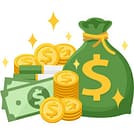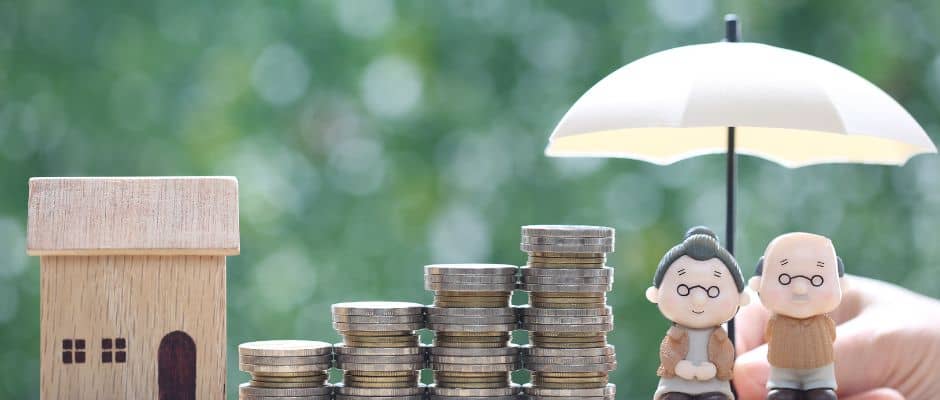What is a Dividend?
If you’re an investor, you have no doubt heard of dividends and the wonderful world of compound growth. For those that are just starting, dividends are regular distributions from a company to its shareholders. These dividends are a portion of the company’s net income and are paid out at a rate that is decided by the Board of Directors. To receive a dividend you must own shares of the stock of that company either through the stock itself or a fund like an ETF. So are dividends a good investment for your portfolio in 2023?
Ultimately this comes down to your investment strategy. For the most part, dividends are a great income stream for your portfolio. Investors who are looking for stable stocks to invest in, with the bonus of receiving regular dividend payments, will want to focus on dividend-paying assets. This is especially true for investors heading into retirement where they will not have a steady employment income to rely on.
Here at SavvyCanadianFinance, we firmly believe in dividend-paying assets. They are one of the best ways to build long-term, passive wealth. Are dividends a good investment? We think so! In this article, we will be talking about everything you need to know about dividends and why they belong in every portfolio.
What is a Dividend Yield?

Remember that payout rate that we talked about earlier? This is also known as the dividend yield. It is represented by a percentage of the stock’s price, which means it can fluctuate over time. To get a better idea of the stock’s true yield, you can look at either the trailing twelve-month yield or the five-year average annual dividend yield. Both of these figures are readily available as public information.
Dividend Yield Example
For simplicity’s sake, let’s say the stock price of company X is $100.00 per share.
If the dividend yield is 4.0%, we know that the stock will pay out 4.0% each year per share.
At a price of $100.00, this means the stock will pay out $4.00 per share each year, or $1.00 per share each quarter.
The natural instinct is to assume that a higher dividend yield is better. This is not always the case. Remember that the dividend yield is a factor in the stock’s price. A higher yield could mean it is the same payout but the stock’s price has fallen, indicating either a weak business performance or a weaker overall market.
Over the long run, the growth of the dividend is more important than the dividend yield. If a company is increasing its dividends every year, it usually means it is increasing its net income and cash flow each year as well. These are much healthier signs for the company than a high dividend yield and volatile stock price.
What is a Dividend Payout Ratio?
The dividend yield gets a lot of attention, but true dividend investors know that the Dividend Payout ratio is just as important. The Dividend Payout Ratio is a measure of the total value of stock dividends paid out relative to the company’s total net income. Some companies, like REITs, pay out most of their net income to shareholders as dividends. Others, only pay out a portion.
How to Calculate the Dividend Payout Ratio
The formula for the Dividend Payout Ratio is:
Total Dividends Paid/Total Net Income
If a company has $1 million in net income and pays out $50,000 in dividends, it has a Dividend Payout Ratio of 0.05 or 5.0%
What does the dividend payout ratio tell us? The dividend payout ratio indicates the likelihood that the dividends will continue to be paid to shareholders. A low ratio means that the company is paying out a low percentage of its net income to shareholders. A dividend payout ratio between 20 and 40% is considered healthy for a mature company because it is a manageable portion of its net income.

How Often are Dividends Paid?
The frequency of the dividend distribution depends on the dividend-yielding asset you are invested in. Traditionally, most corporations pay out dividends on a quarterly basis or every three months. Some assets, like REITs, can pay out dividends on a monthly basis. But some ETFs will only pay out dividends on an annual or semi-annual basis. Make sure you research the dividend payout frequency of the stock or fund you are looking to invest in.
To make matters even more confusing, companies can even announce a special dividend. This is usually a one-time payment to shareholders after a particularly successful year. Costco (NASDAQ: COST) is a great example of a company that regularly rewards its shareholders with special dividends.
What are the Dividend Aristocrats?
If you have been researching dividend stocks, you might have heard of the Dividend Aristocrats. This is an exclusive group of stocks that has raised its dividend in 25 or more consecutive years. To be able to raise a dividend for this many years a company has to have high cash flow and rising levels of net income.
Investing in Dividend Aristocrats is a wonderful way to secure a stable income stream for your portfolio. These stocks are usually blue-chip stocks so they exhibit little volatility even in the worst market environments. Having trouble deciding which Dividend Aristocrat stocks to buy? Why not own them all in a Dividend Aristocrats ETF?
iShares S&P/TSX Canadian Dividend Aristocrats Index ETF is a great choice for any long-term Canadian portfolio!
The S&P 500 Dividend Aristocrats are widely seen as some of the strongest investments you can own in your portfolio. Some stalwarts include:
- Procter & Gamble (NYSE: PG)
- 3M (NYSE: MMM)
- Coca-Cola (NYSE: KO)
- Johnson & Johnson (NYSE: JNJ)
- Colgate-Palmolive (NYSE: CL)
- Target (NYSE: TGT)
- AbbVie (NYSE: ABBV)
- Walmart (NYSE: WMT)
- McDonald’s (NYSE: MCD)
What are the Dividend Kings?
At the very top of the Dividend Aristocrats’ list is an even more exclusive group of companies: the Dividend Kings. These companies have raised their dividends for a staggering 50 consecutive years or more! Which companies are the Dividend Kings? Here is a few of them:
- Procter & Gamble (NYSE: PG)
- Dover (NYSE: DOV)
- 3M (NYSE: MMM)
- Coca-Cola (NYSE: KO)
- Johnson & Johnson (NYSE: JNJ)
- Genuine Parts (NYSE: GPC)
- Colgate-Palmolive (NYSE: CL)
- Emerson Electric (NYSE: EMR)
- Target (NYSE: TGT)

What are the Downsides of Dividends?
Unfortunately, there are some downsides to receiving dividends. The most notable downside to owning dividend assets is that you are taxed on dividends as capital gains. You can combat this by investing in dividend stocks or ETFs in a registered account like an RRSP or in your TFSA. In a regular, non-registered account, you will be taxed on dividends as capital gains. In Canada, dividends that are received from Canadian corporations are taxed at a lower rate than foreign companies. Keep that in mind when building your dividend portfolio!
Another downside of investing in dividend stocks is the opportunity cost of missing out on high growth from other investments. Investing in blue-chip, value stocks that pay dividends takes away from the potential of that capital making higher gains in growth stocks. This is personal preference and some people are fine risking that growth for the more stable dividend stocks. Are dividends a good investment? Of course! But you should know the downsides of investing in them as well!
The Bottom Line: Are Dividends a Good Investment?
So are dividends a good investment in 2023?
Here at SavvyCanadianFinance, we do believe firmly in owning dividend-paying assets in your portfolio. Not only do they provide a solid stream of income, but they are also relatively safe investments to make with your money. Investing in dividend-paying assets is like buying additional income for the rest of your life.
Now, dividend assets do not need to make up your entire portfolio. You should find a healthy balance between growth and income assets for a complete portfolio. When those dividends roll into your account, you can re-invest them to grow your distribution, or allocate that capital to other stocks.
As always, this article is meant to provide you with a foundation for understanding dividends. This is not meant to be financial advice and you should always do your own research before investing!
Stay Savvy!
